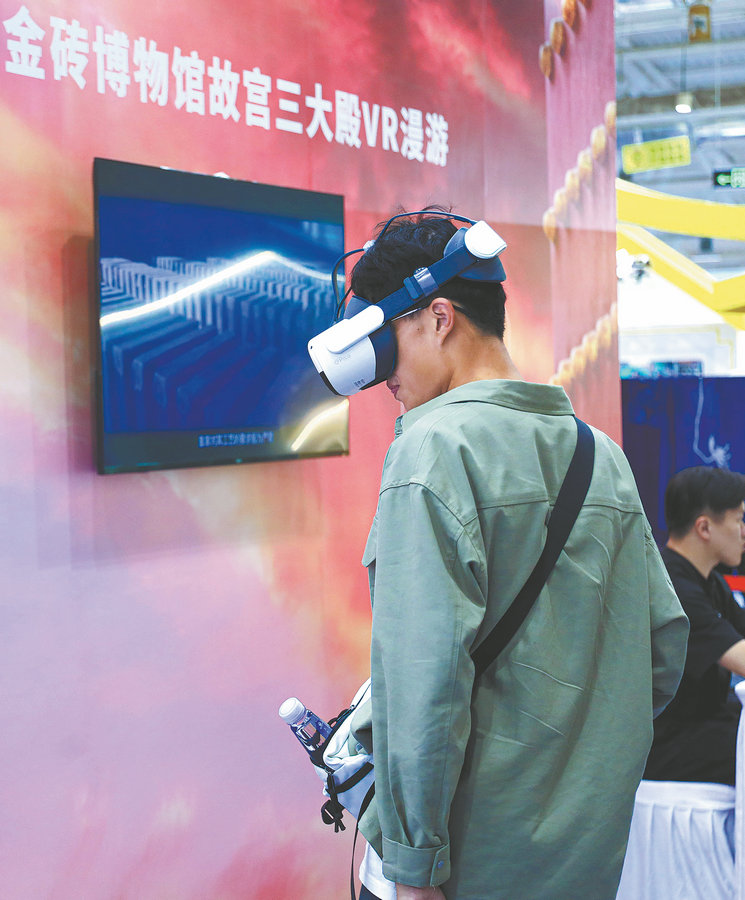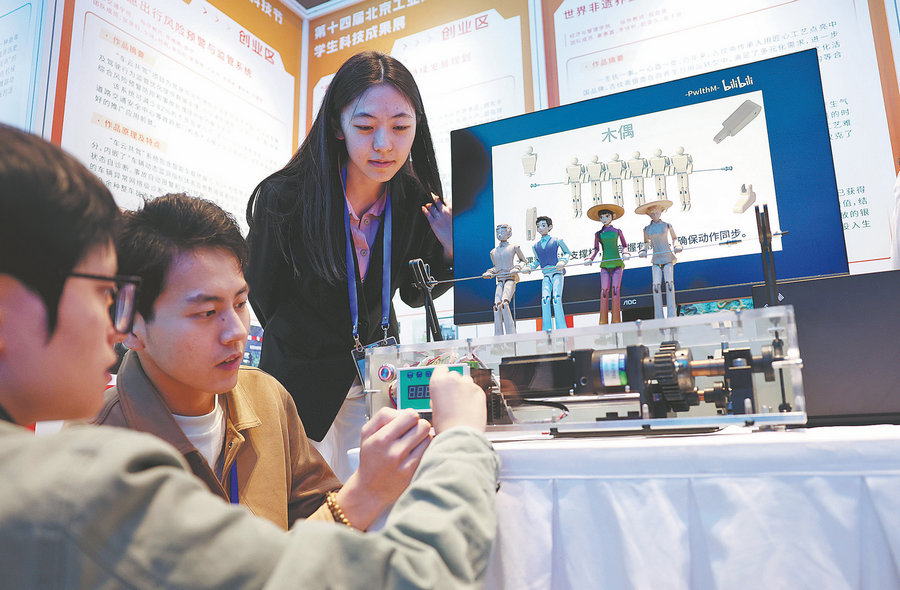

Rapid progress
After the formulation of the traditional craft revitalization plan in 2017, and the promise to advance the national cultural digitalization implementation strategy in 2022, the digitalization of intangible cultural heritage has advanced at an unprecedented speed, said Liu Xinchen, a faculty member with the Zhejiang Guangsha Vocational and Technical University of Construction.
These laid a solid foundation for the widespread dissemination of, and innovative measures introduced in intangible cultural heritage, Liu added.
Immersive experiences show great development potential and have a broad range of applications, she added. They accurately reproduce historical scenes involving intangible cultural heritage that resonate with participants and allow them to experience their charms and deepen understanding, Liu explained.
"Through the integration of interactive devices and the 'gamification' of design elements, immersive experiences transform visitors from passive spectators into active participants in the transmission of intangible cultural heritage techniques, helping enhance public cultural engagement and awareness of preservation," she said.
"This deep engagement opens up highly effective communication paths for the transmission and innovative development of intangible cultural heritage."
Su, from Beijing Union University, said 3D displays are more engaging than traditional text and image-based displays. They leave a stronger impression on viewers and attract more interest in intangible cultural heritage, he said.
"Digital technology breaks the limitations of time and space, offering more people the opportunity to learn and inherit these traditional arts," Su said.
It also sparks the interest of younger generations, and better promotes the development and evolution of intangible cultural heritage, he added.
"I believe that with the development of technology and the iteration of techniques, more display scenarios will emerge to interpret the culture behind intangible cultural heritage," Su said.
